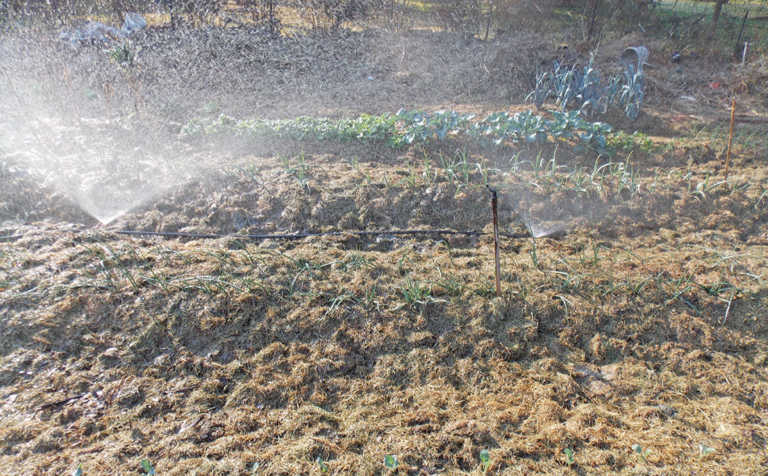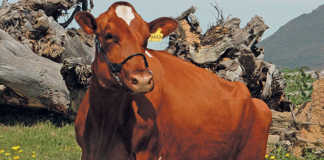
Photo: Bill Kerr
Many home gardeners irrigate with a hand-held hose. This is very poor practice, especially if done daily.
The ground may appear soaking wet, but it takes time for water to penetrate to the depth of the roots. To test this, dig into the soil after one of these irrigations; you’d be surprised at the result.
Most home gardeners irrigate in the early evening. But if the leaves remain wet during the night and early morning, the plants become vulnerable to disease-causing organisms.
Many plants require free water on the leaves for a certain period so that it can enter the tissues and the plant can germinate. It’s therefore safer to irrigate early enough for the leaves to dry before nightfall.
A dragline system, where a sprinkler or two is pulled to a new position after a period, can work well; it also enables you to irrigate only the planted areas.
Mini sprinklers placed 5m to 6m apart can also work. Just make sure the watered areas overlap, or you will end up with dry gaps.
Another option is permanent sprinklers with a valve on each line. This enables you to wet only where required without having to move sprinklers.
To determine how much water you need to apply per time unit, place tin cans at intervals and measure the water in them by inserting a ruler into each tin. A rule of thumb is that 1mm of water applied wets 1cm of soil.
You need to apply about 30mm per irrigation. The following day, dig into the soil to check the water penetration.
READ A masterclass in irrigation efficiency by Israel
Drip irrigation saves a great deal of water and is an option where water is scarce. Getting drip irrigation right is tricky, however; it is easy to over-irrigate without realising it. The best approach is to apply water for a certain period, then check the wetting by digging the following day to determine the time it takes for the water to penetrate to a specific depth.
Thereafter, adjust the irrigation to obtain the required 30cm.
Timing and mulching
Generally, it is best to irrigate about once a week, but this can vary according to conditions. Use a garden trowel to examine the soil condition to determine when to irrigate.
The plant’s leaves will also tell you when it is thirsty; they start developing a duller appearance. Proper irrigation at correct intervals will save water and be more convenient.
Mulching the area also saves water and creates better growing conditions. Use autumn leaves, dry grass clippings and other suitable plant material added to the mulch layer; it decomposes to feed earthworms, which greatly improve soil fertility and plant health.











